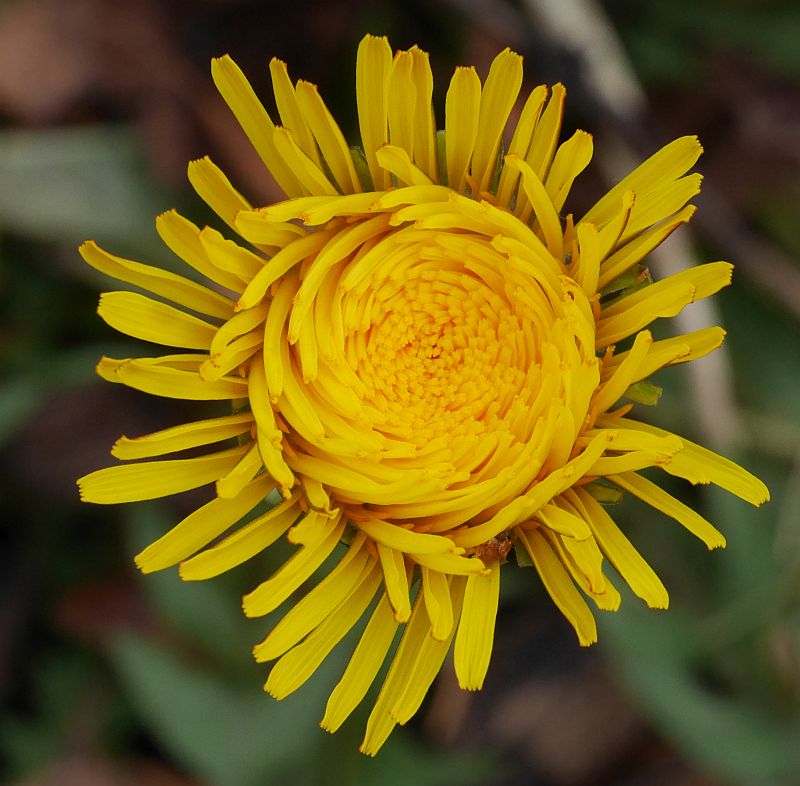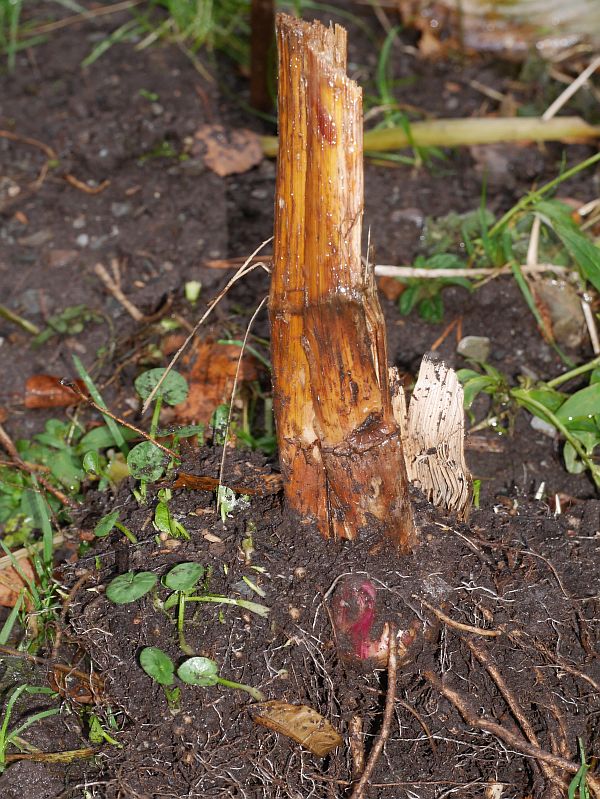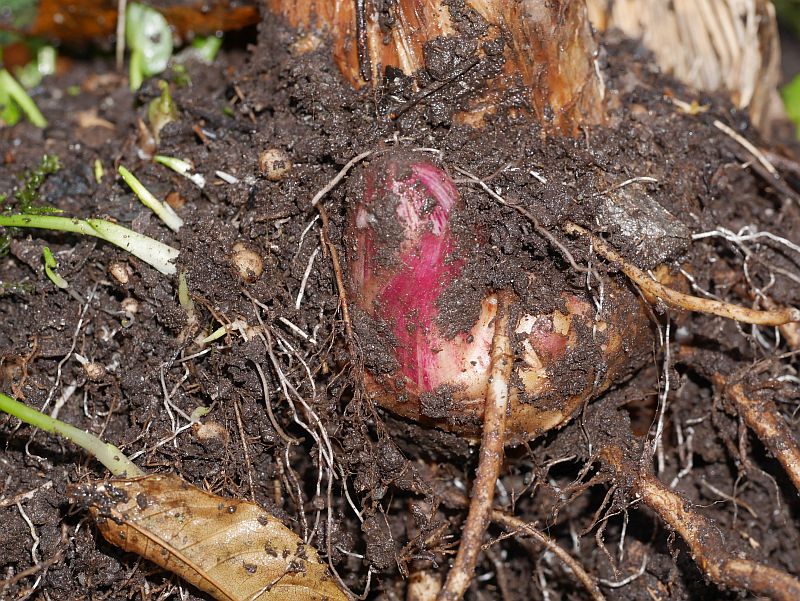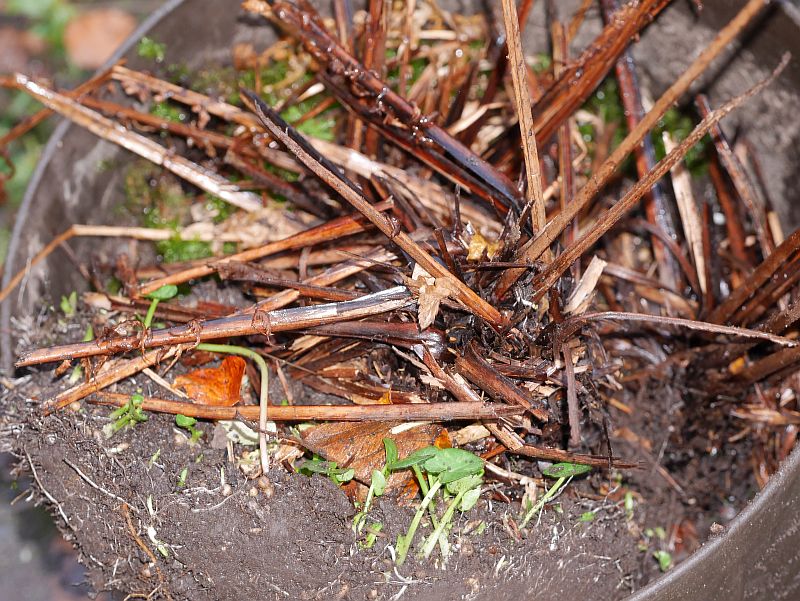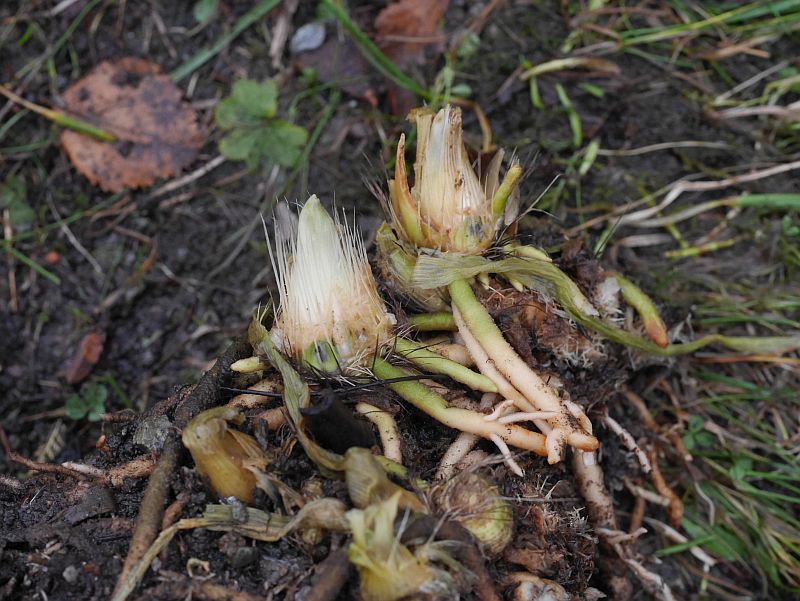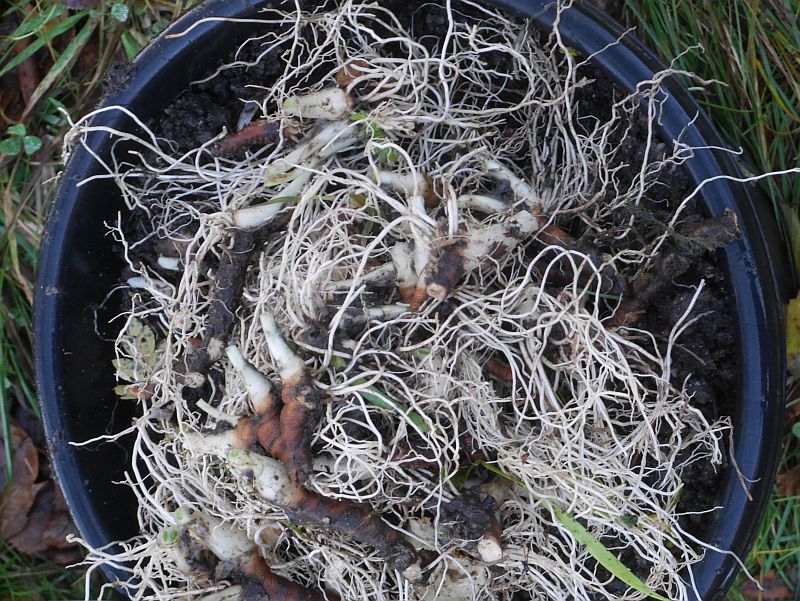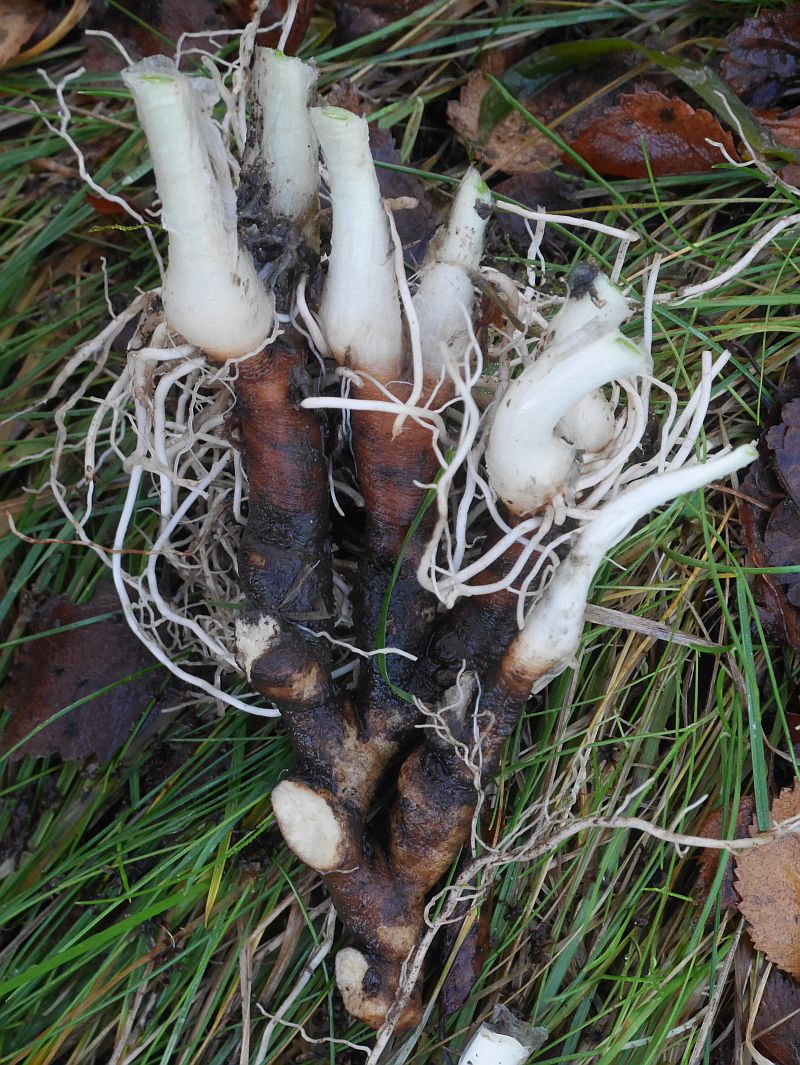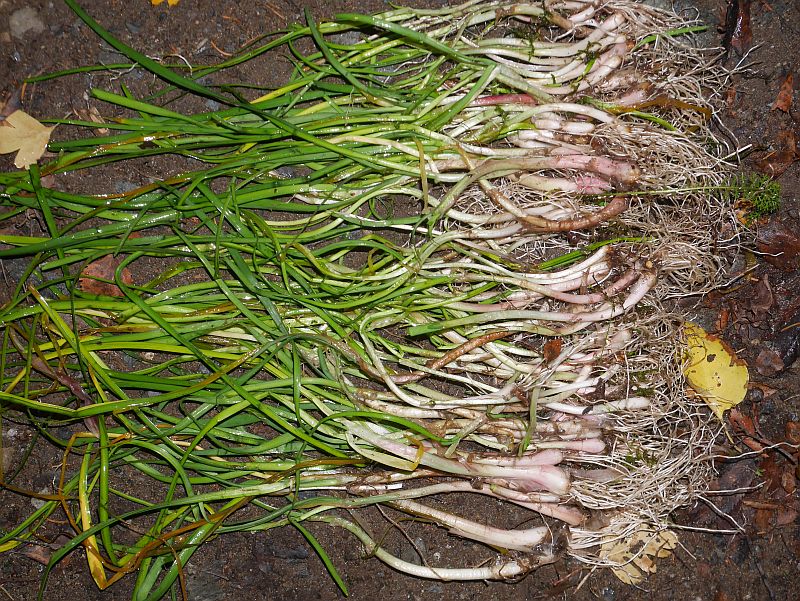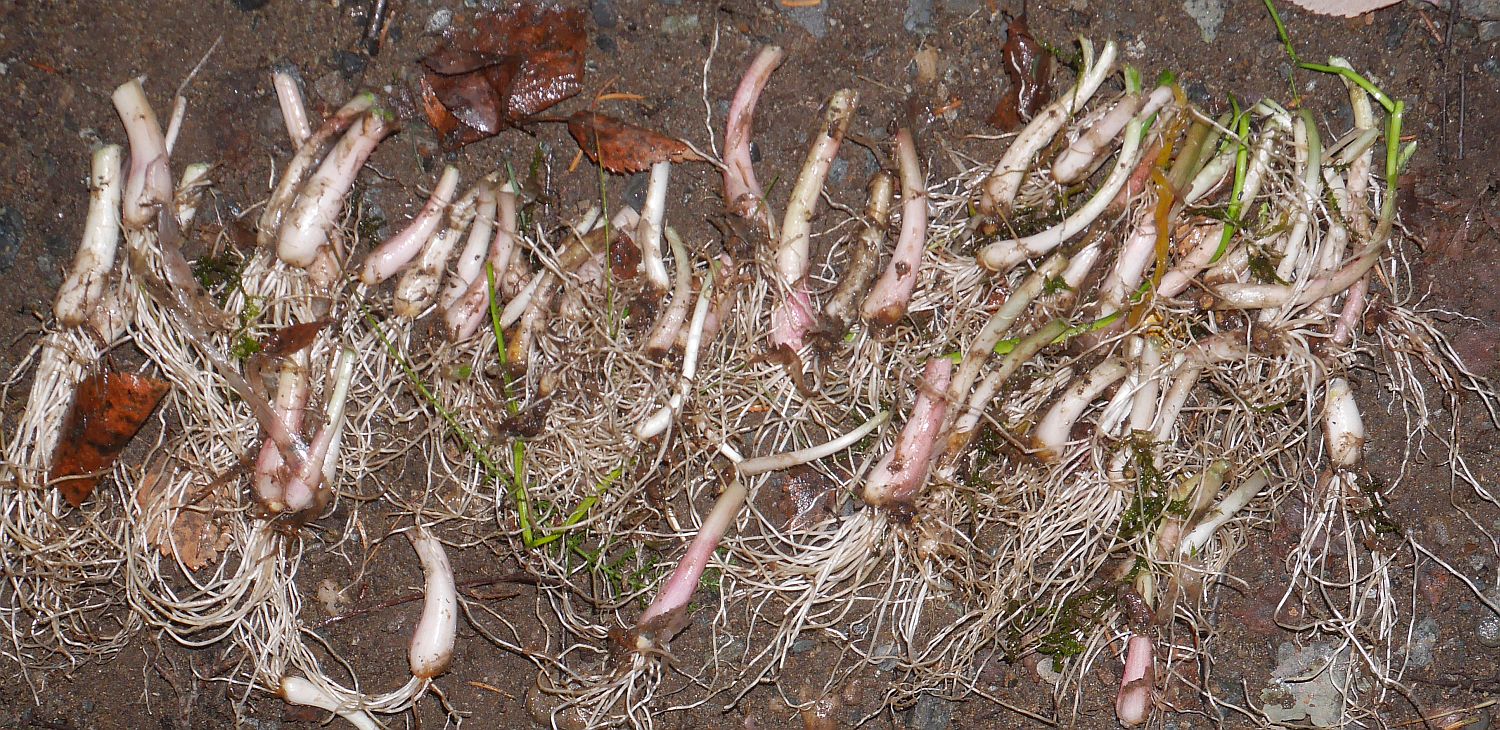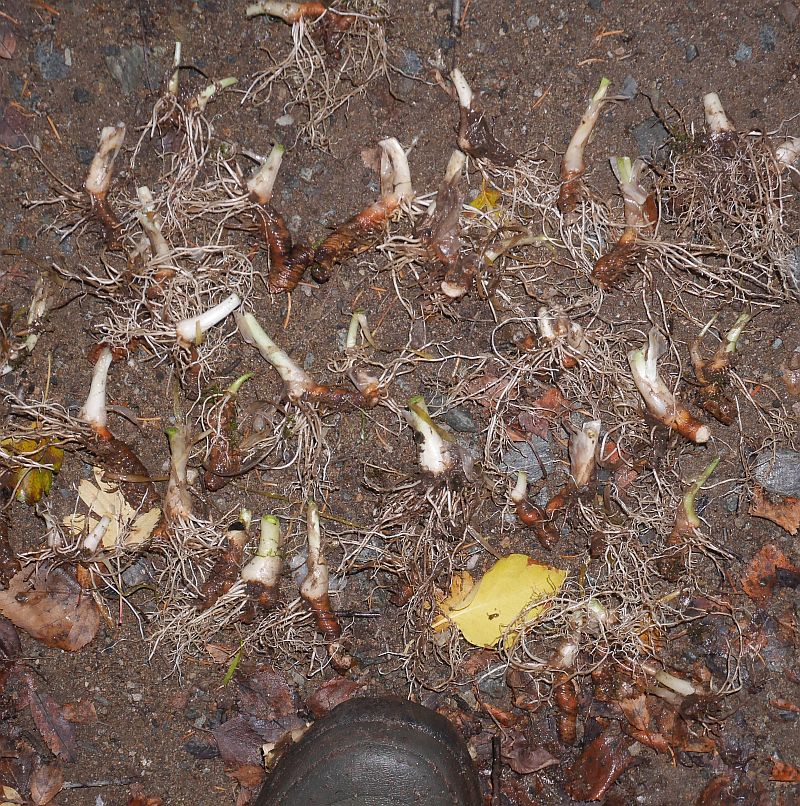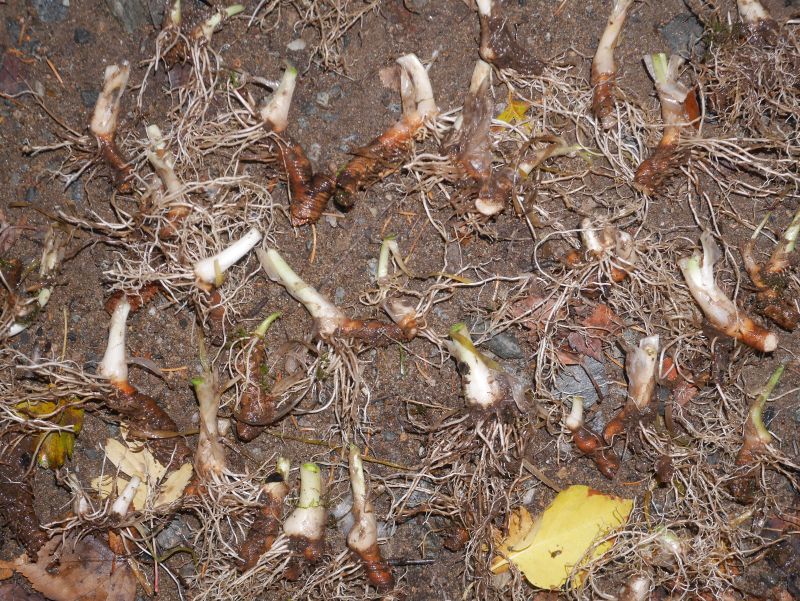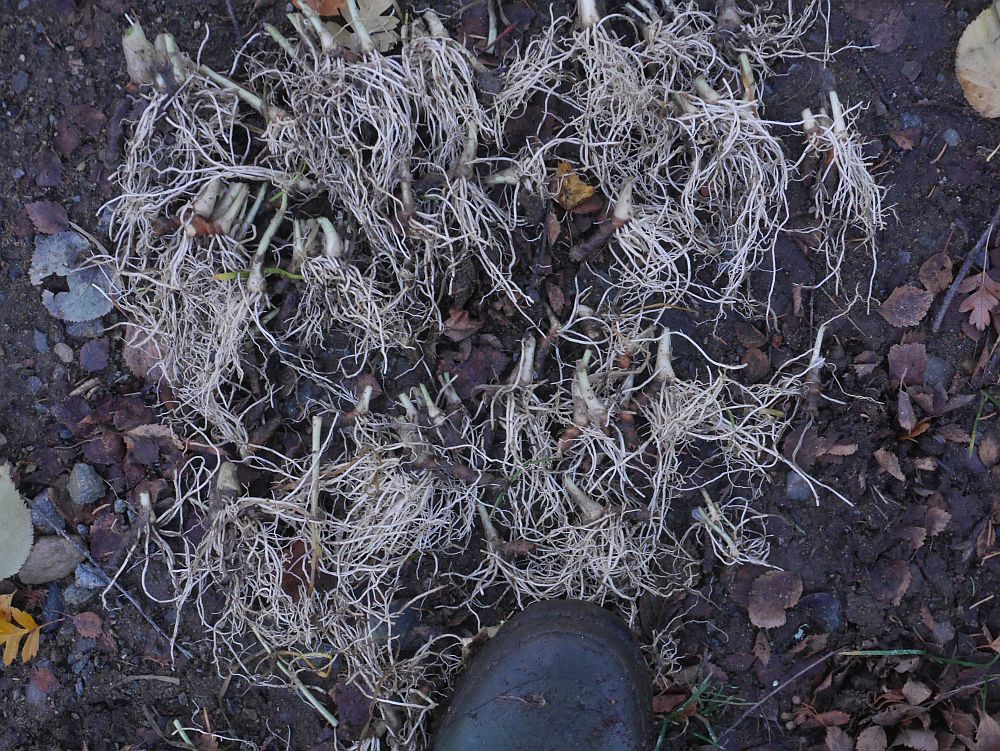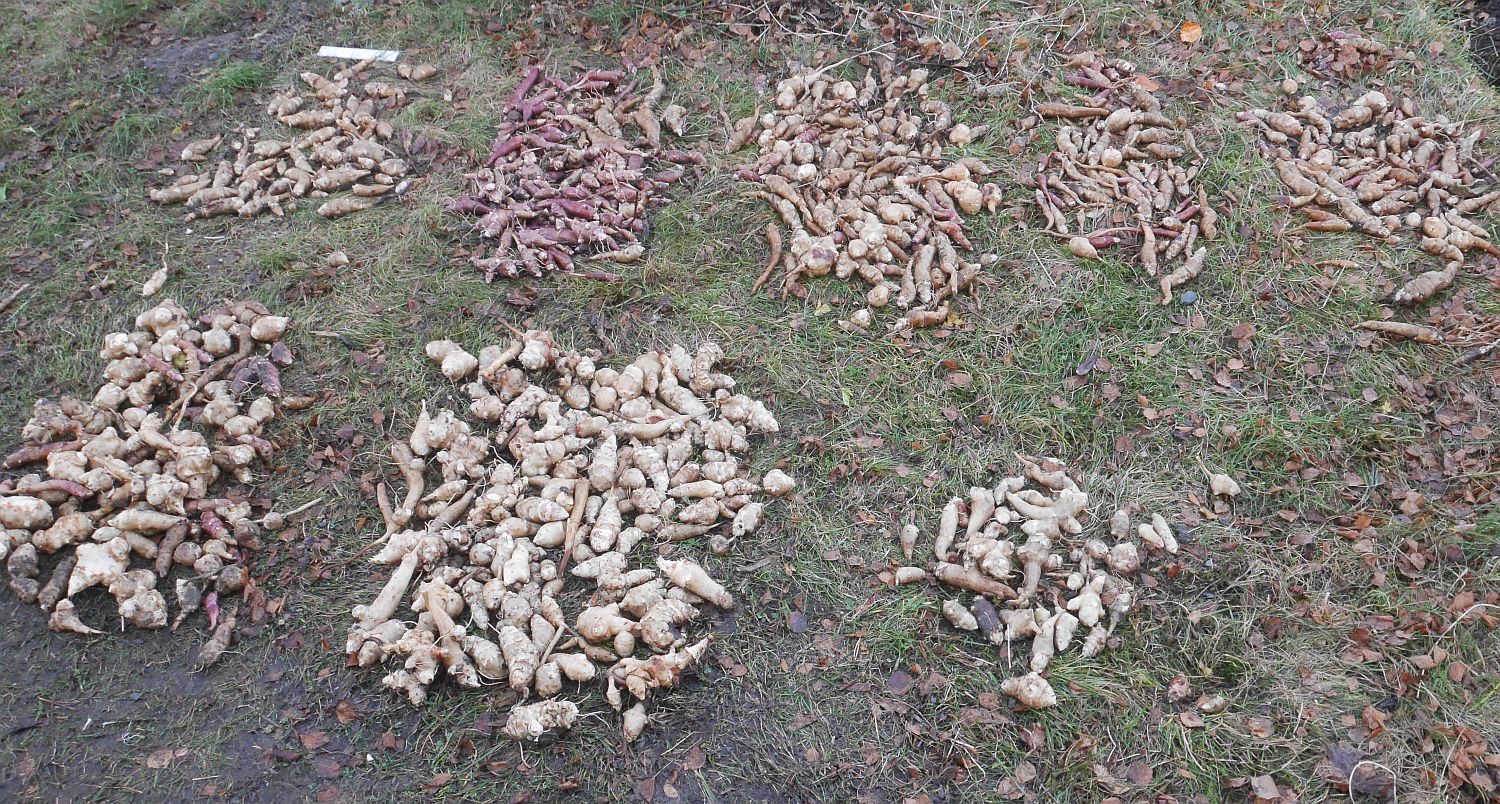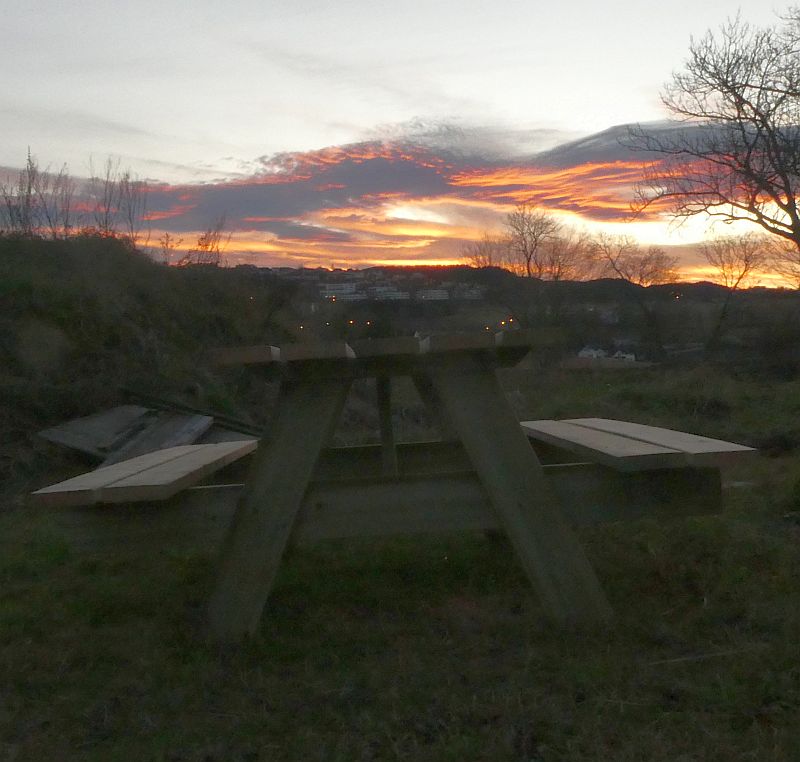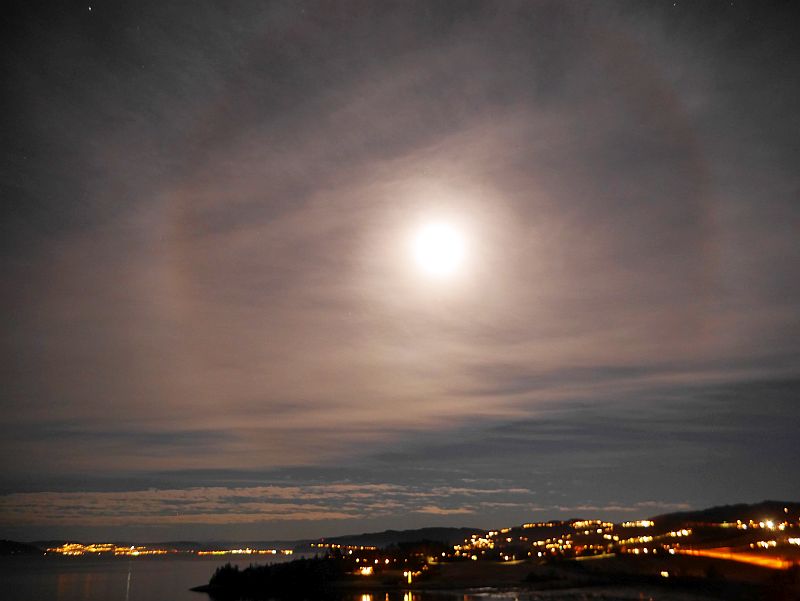
Monthly Archives: November 2020
Diversity soup peas
Of the 20 varieties of peas we grew this year in my garden and the community garden, some of the harvest is saved for seed and sharing in Norwegian Seed Savers (https://kvann.no). The rest are mixed for winter soups and pea fritters. Here’s some of this year’s crop:
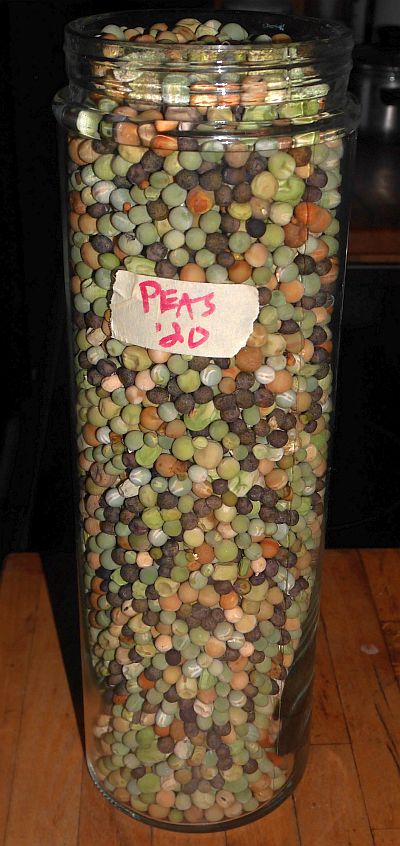
Malvik Jerusalem Artichokes
I harvested my little collection of Jerusalem artichokes (jordskokk) at home this week (the others I’ve posted about were grown at the community garden). All of these varieties I’ve been growing for a number of years:
Dave’s Shrine: purple skinned and long; a runner (jeg tror jeg fikk den fra Terry J. Klokeid for 20 år siden, see more om Terry below)
Urodny: From Danish Seed Savers about 5 years ago; it came to Denmark from the Czech Republic in 1969, early easier to clean variety, white skinned.
Bianka (From Swedish author Lena Israelsson in 2001; it seems to have originated in Sweden from gardening author and broadcaster Åke Truedsson who told me “All I know is that I found this variety everywhere in Russia and Siberia and it’s name was Bianka. I took it home to Sweden in 1989”
Stampede: I had noticed that the description of Stampede in Cornucopia II -a special high-yielding, extra-early strain, was very similar to Bianka which also seemed to be identical to the best yielding Norwegian variety I’d tried – Dagnøytral (dayneutral).
“Flowers in July and matures more than a month before common cultivars. White-skinned tubers are large, often weighing over 1/2 pound each. Relatively dwarf; height about 6 feet. Winter hardy in severe cold. Developed by Indians in northern Ontario who selected ; plants for earliness and tuber size”
I therefore set out to get hold of Stampede in order to compare all three varieties directly. Bunkie Weir on the Homegrown Goodness forum kindly sent me tubers in December 2008. The four varieties including another variety Dwarf Sunray were all grown together and all flowered on more or less the same day, were the same height and had similarly shaped compact knobbly tubers. I concluded that they were all the same clone that had been spread around the world (my conclusion hasn’t been tested genetically).
Fuseau: I think I got this one over 20 years ago from the UK (it was commercially available). This desciption is also from Cornucopia II: “Tapered, sweet potato-like tubers; 4 to 5 inches long, 1 to 1 1/2 inches in diameter; skin tan-colored, very smooth and entirely free of the knobs that characterize the common types and makes cleaning difficult.”
This variety didn’t grow well for me with variable yields from year to year as early frost would stop the tuber growth, but I kept it due to its easy to clean quality. It never managed to flower until this year, but not until mid-November (Stampede / Bianca / Dagnøytral usually flower in late September):
Terry Klokeid
I first came in contact with Terry Klokeid of Amblewood Organic Farm on Salt Spring Island, BC, Canada through the Edible Wild Onelist forum in 1999. He wrote:
“I have 16 varieties of sunroot, with (cooked) flavours ranging from sweet carrot and sweet walnut to globe artichoke flavour to bland and potato-like; sunroots for boiling and baking, and for salads. Container-grown varieties. Varieties for rabbits and other animals. There must be lots more varieties of sunroot out there, and I aim to collect and conserve all of them”
My last contact with him was in 2007 when he wrote: “I have access to the Agriculture Canada collection of a couple hundred accessions, but they are too poorly maintained by them to tell them apart. I started to grow some out in order to size up the tubers, but deer got the entire crop and I have been too distracted to replace it.”
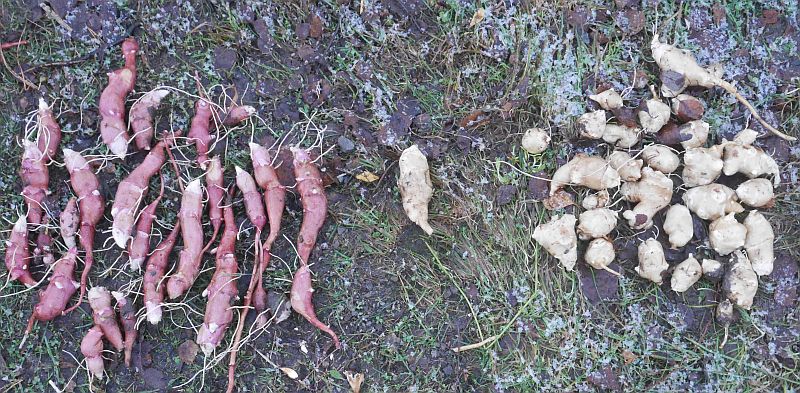

Horseradish harvest
Although perfectly hardy, once it gets colder I won’t be able to harvest the roots, so today I harvested the winter’s supply of horseradish, and at teh same time limiting the spread of my plant. Some roots were planted in soil with the green shoots cut back. These will be forced in the dark for the delicious shoots later in the winter. The other roots will be stored in the cellar in damp leaves until I need them for making grated horseradish and/or horseradish sauce, Austrian apfelkren (grated with steamed apples) or grated cooked beetroot…or homemade wasabi sauce.
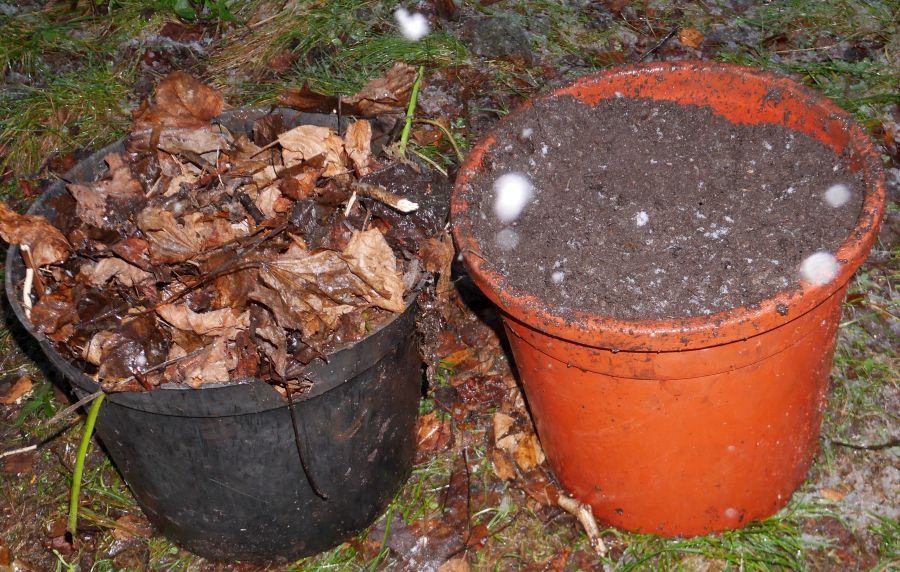
This one tried to run away…but I caught it!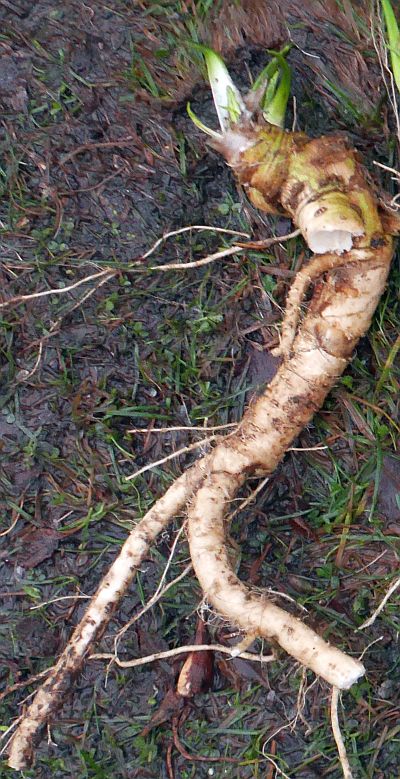
Winter Dancing Flies
On warm days in autumn and winter, there are thousands of dancing flies or winter gnats (vintermygg) particularly in the windows. Last week all the windows downstairs had swarms of these dancing up and down and were swarming all over the garden too. They are fun to watch and wonder why and how these are active in such low temperatures when most other insects are hibernating or overwintering as larvae or eggs. They can even be seen on warm winter days on the snow. These are flies in the Trichoceridae family (we have 15 species in Norway) and provide morsels of protein in winter for the birds in the garden! The larvae feed on decaying plant material, rotten wood and fungi…there’s plenty of that here!
An important component of my food forest garden.
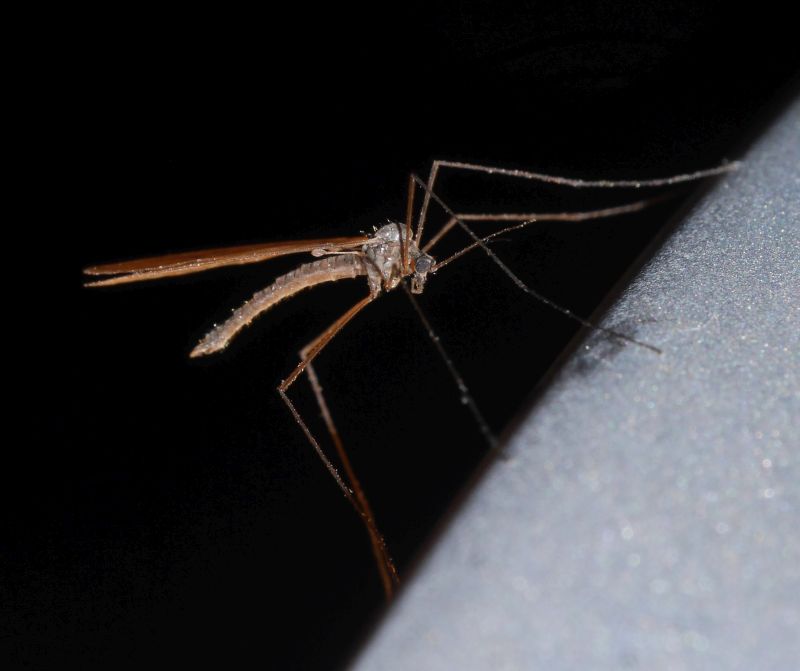
Snow and fieldfare flock
A small flock of fieldfares (gråtrost) turned up in the garden today after a small snowfall. They were feeding on a few remaining guelder rose / krossved (Viburnum opulus) berries. A single resident fieldfare defended the elderberries, but allowed a blackcap (munk) to share the crop.
Harvesting winter vegetables before the freeze
I’ve been self-sufficient in fresh vegetables year round and have blogged and lectured about how I can do this even in winter without a greenhouse, without a freezer and without using additional energy apart from my own manual labour :) The most important factor allowing me to do this is the cold cellar under the house where I can store vegetables cold and frost free. None of the common winter leafy green vegetables further south in Europe – kales (grønnkål), chards (mangold) and leek (purre) – can be reliably overwintered outside here, although winters are getting milder. For example, swiss chard is killed by the first hard frosts which due to our northern location last all day (little direct solar warming at this time of year). Usually I’m taken by surprise by hard frosts in early November and there’s a panic digging up vegetables and I often have to use an iron bar to get through the ice layer. Not so this year. Thanks to corona and a very mild first part of November, I’ve had more time for the harvest. Last week I lifted the swedes and turnips and yesterday the parsnips, jerusalem artichokes and carrots. Today, I moved all the swiss chards, celery and chicories (sikkori) to large buckets, planted in soil, ready to move quickly inside later in the week if necessary as colder weather is forecast. In the past I’ve stored these winter vegetables in hand made wooden crates filled with soil. However, after 20 or so winters, they’re no longer usable and I hadn’t got round to making new ones, so I will store in these large plastic buckets, which had been purchased to plant the Allium collection, now with a permanent home at the Ringve botanical garden.
I’ve also been digging up perennial vegetables for winter forcing. This includes various onions – Allium senescens, Allium flavescens, Allium angulosum and Allium cernuum. In addition, I’ve dug a udo (Aralia cordata) root and also a few ostrich ferns (Matteuccia struthiopteris) and Hosta “Frances Williams” (sieboldiana). Finally, I’ve been digging large amounts of my most important winter vegetable, dandelion! (see my 2018 harvest here: https://www.edimentals.com/blog/?p=20124)
19th November: the next morning it snowed (see the video at the bottom)!
Harvested swiss chards including the Lucullus type and perpetual spinach (all Beta vulgaris var cicla):
Chards with celeries at the beginning:
Jerusalem Artichoke Harvest at Væres Venner
At the weekend I harvested all the Jerusalem Artichokes (jordskokk) at the Væres Venner Community Garden. This was two bike loads with a big rucksack to get home :)
This is a mix of experimental JAs from crosses made in Italy by Paolo Gaiardelli between our best variety Dagnøytral (which is probably identical to Stampede, Bianca and Dwarf Sunray) and other varieties (unfortunately I lost the label and am not sure of the details). You can see in the second picture which tubers I’ve selected for growing on!
I also completed bastard (double) digging a new bed at the back of the shed for various climbers including hardy kiwi Actinidia arguta!
Last berries and pollinators
I thought the berry season was over with the frosts at the end of October, but with the air temperature in November so far above 0c I was able to harvest a few last blackberries (the bush has started flowering again) and 4 raspberries! Various pollinators had also emerged from hibernation including two hoverflies.
Swirly Late Dandelion
Probably the last dandelion to flower in the edible garden in 2020! The temperature didn’t drop below +12C last night, but there may be snow later in the week!
